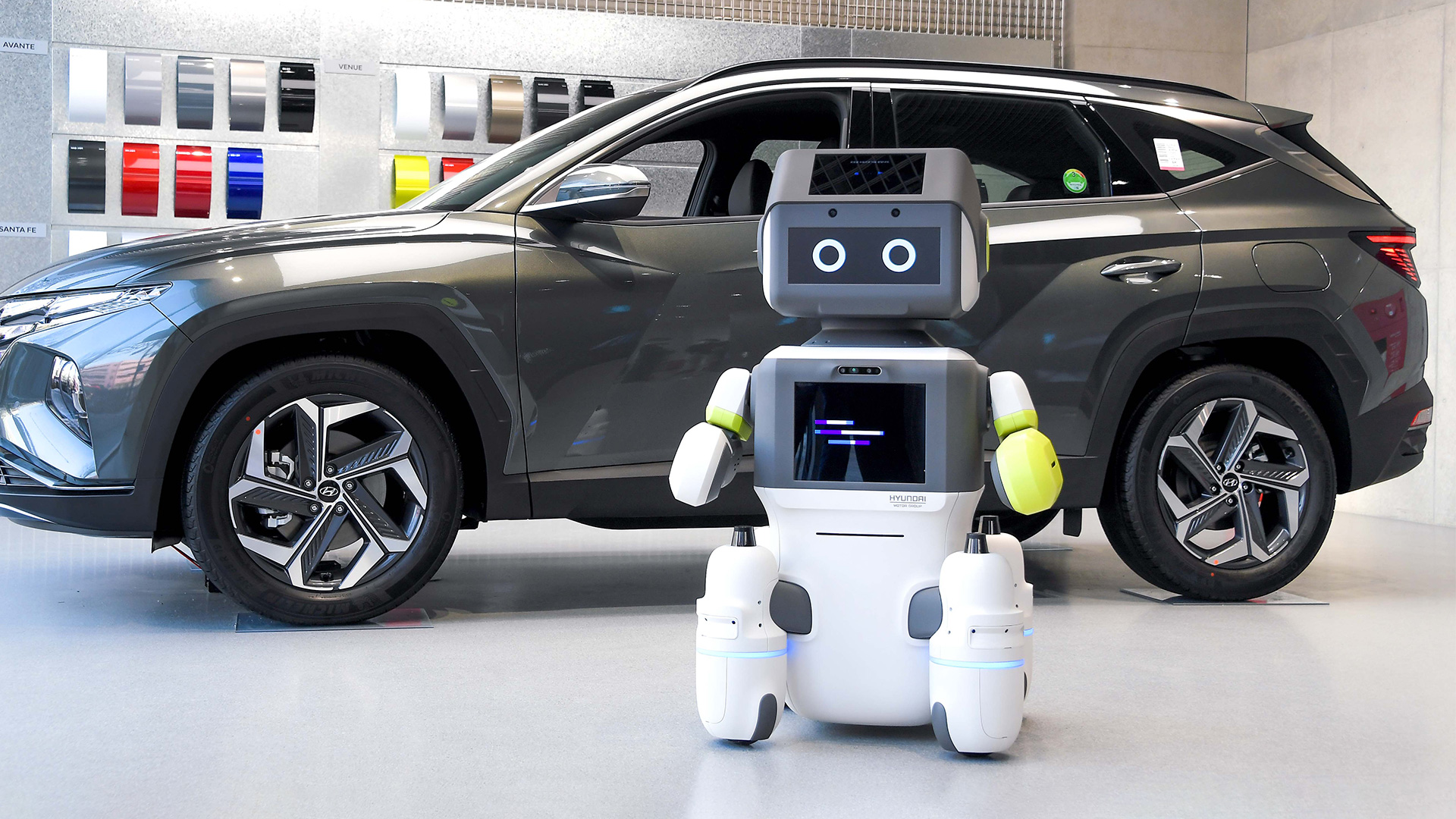
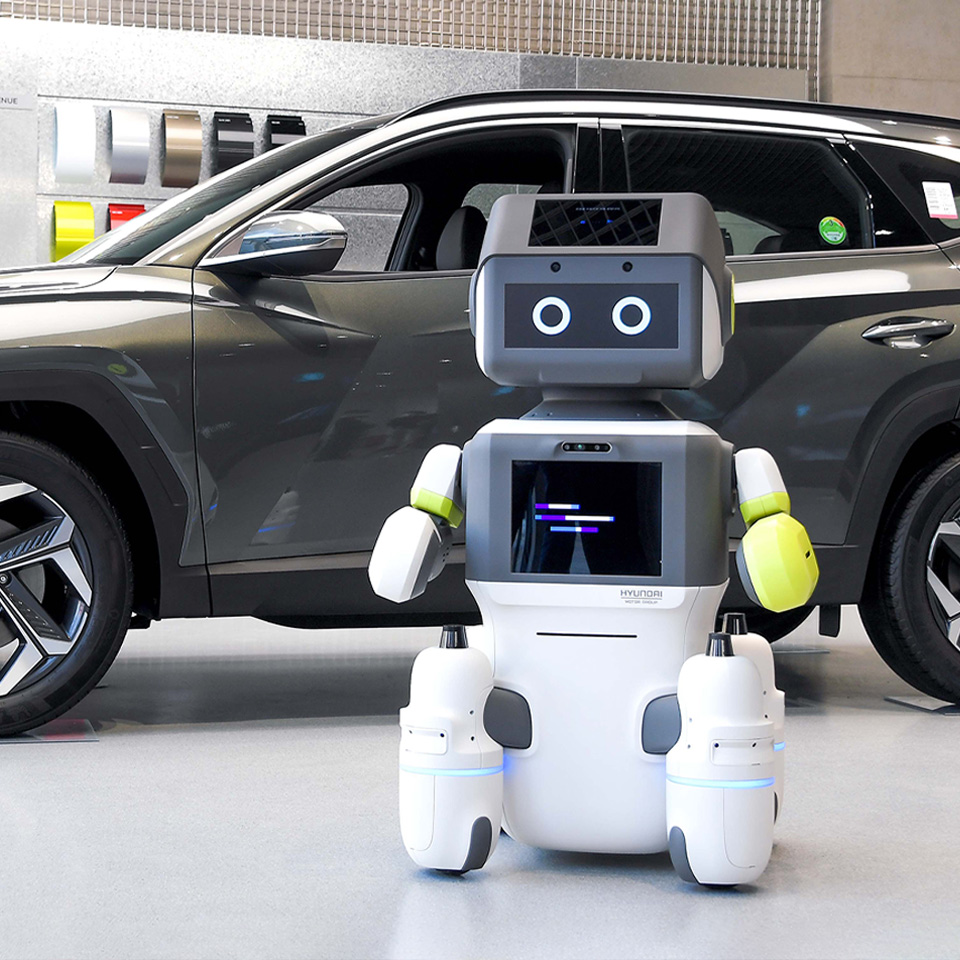


Hyundai Motor Group's technology is always towards humans. Eco-friendly hydrogen-electric vehicles that increase the sustainability of mankind, an elevator concept that overcomes the limitations of human mobility, and urban aviation mobility (UAM) that provides mobility solutions for future cities, are the vision of the Hyundai Motor Group - 'Progress for Humanity'. The robotics technology of Hyundai Motor Group for various fields has also developed based on this philosophy. This is because robots provide freedom of movement to the vulnerable and can be expanded to various fields such as industries and social welfare.
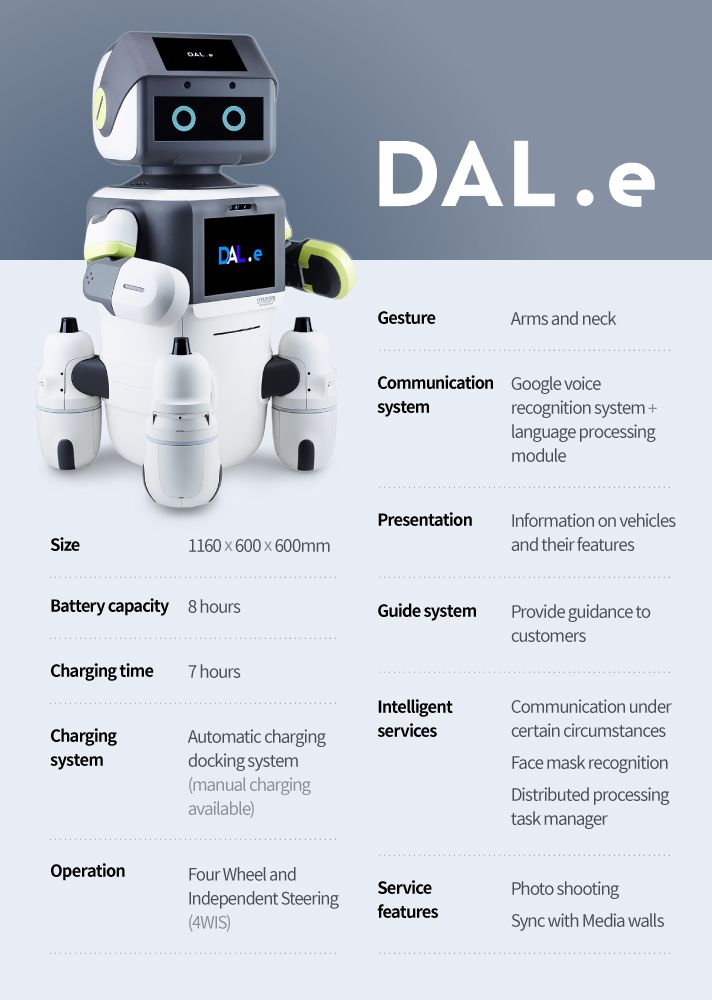
Recently, Hyundai Motor Group unveiled its first service robot: DAL-e, developed by Hyundai Motor Group Robotics Lab. DAL-e will be deployed at Hyundai Motor's Songpa-Daero branch this month to greet customers and introduce exhibition vehicles. Service robots such as DAL-e can be active for 24 hours and have a variety of advantages, such as delivering brand messages more effectively with consistent services. It also meets the needs of specific customers who prefer non-face-to-face service, and it is freer from social concerns about face-to-face contact in the COVID-19 pandemic.
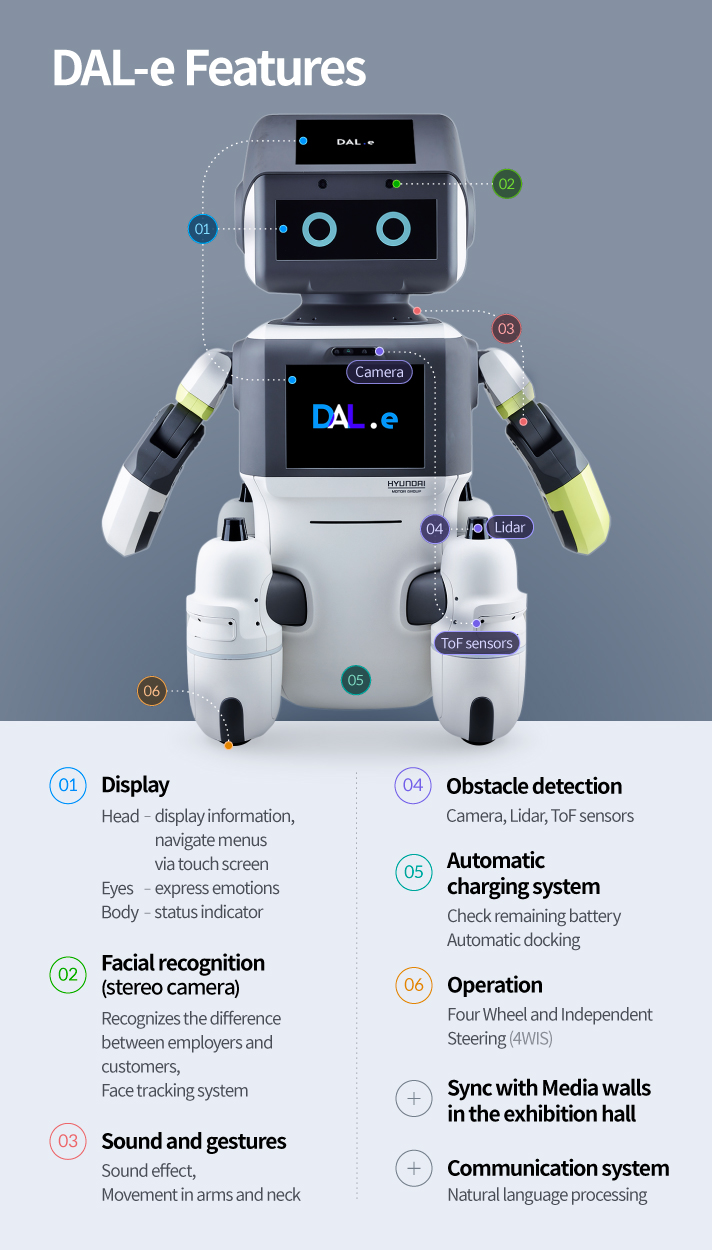
The biggest feature of DAL-e is that it can communicate naturally and smoothly with customers using artificial intelligence technology. In addition, it can move to the customer to provide the necessary information. DAL-e's service starts when the customer says "Hello DAL-e". For example, if a customer says, “Give me information about vehicles,” then DAL-e goes, “I know much about Tucson and Avante (Elantra). Which car do you want me to explain?” Then, when the customer chooses a vehicle type as they approach the car, DAL-e starts describing in detail. In addition, it supports entertainment features such as taking photos of customers or playing videos containing information on vehicles by syncing with the 'media wall' in the exhibition hall. The customers can also receive photos DAL-e took through their smartphones. Finally, when a customer leaves the exhibition hall, he says, “Thank you for visiting the exhibition hall. See you again next time!” to customers.
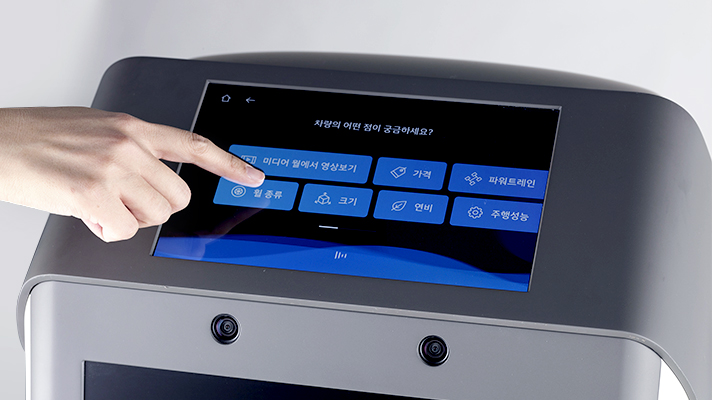
The reason why DAL-e can grasp and respond to human intentions is that it has a real-time voice conversation system based on natural language processing. In addition, customers can use various functions by touching the display of DAL-e with their finger without having to say what they want, and they can grasp DAL-e's emotions and current state through displays mounted on the eyes and body.
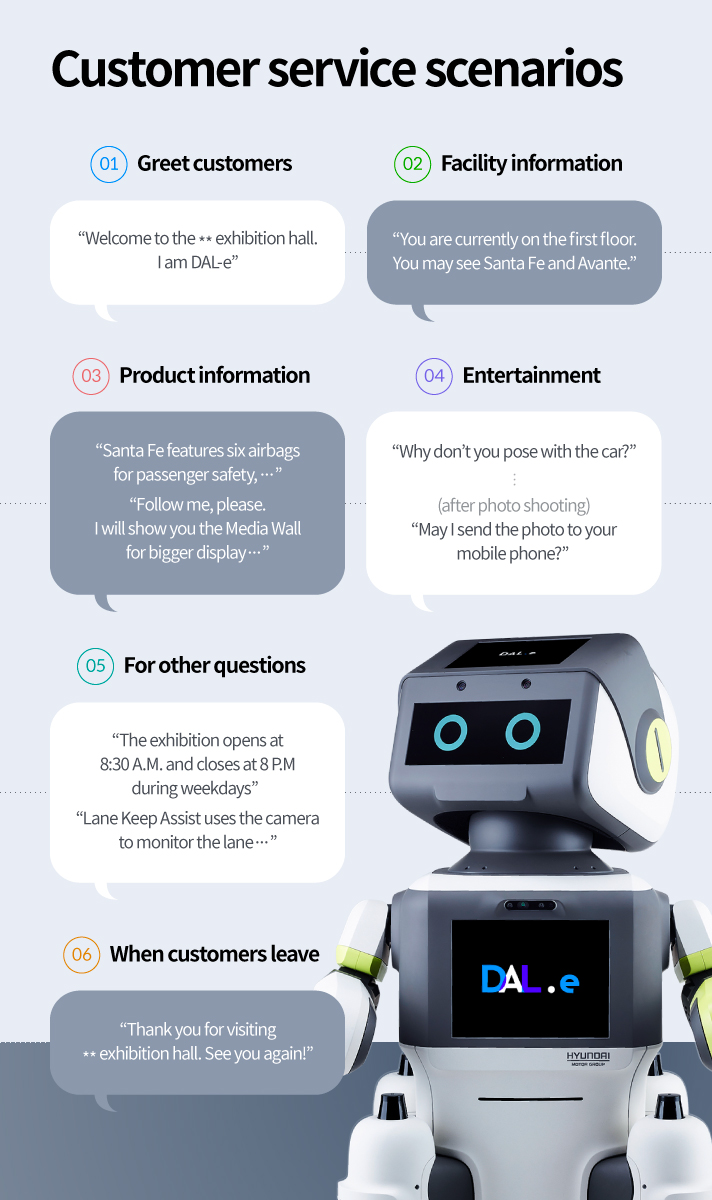
DAL-e interacts with people through various facial expressions and gestures that increase intimacy. Not only does it take appropriate gestures by moving its arms and neck according to the conversation, but it also supports a Face Tracking function that makes it talk while looking at the customer's face. This is because the customer may feel unnatural if the robot looks elsewhere and talks. Based on facial recognition technology, it uses two cameras mounted on the head to recognize whether the customer is wearing a face mask, then starts guiding.
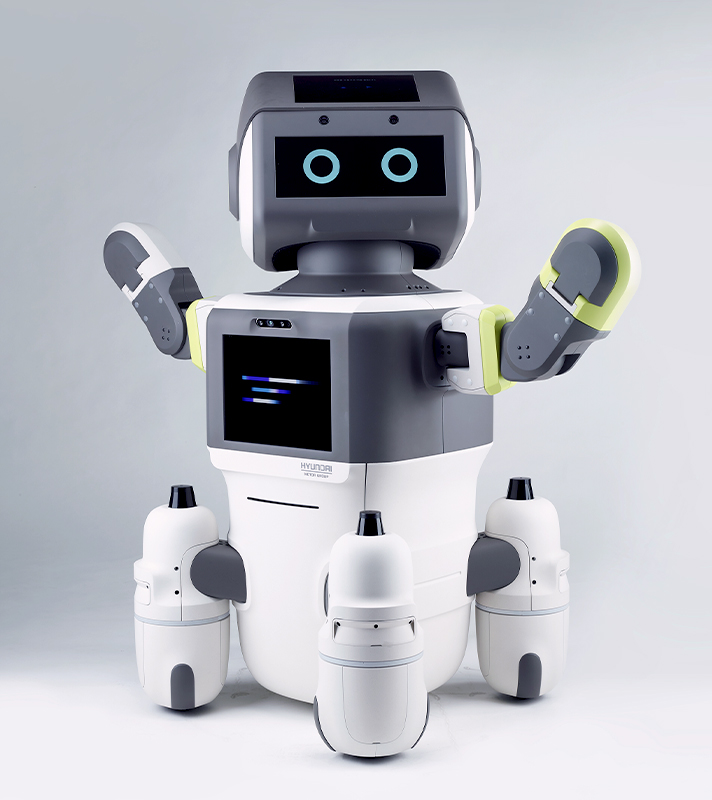
In addition, DAL-e uses autonomous mobility technology. It avoids obstacles in real-time, freely roams inside the exhibition hall, and when power is insufficient, it searches for a charger by itself and charges the battery. It uses two Lidar sensors that detect obstacles installed on the 'Four Wheel and Independent Steering (4WIS)' that can be turned 360° using four wheels. Since the four wheels are independently controlled, it is possible to move diagonally and rotate in place, and it can move like a figure skater by combining these movements.
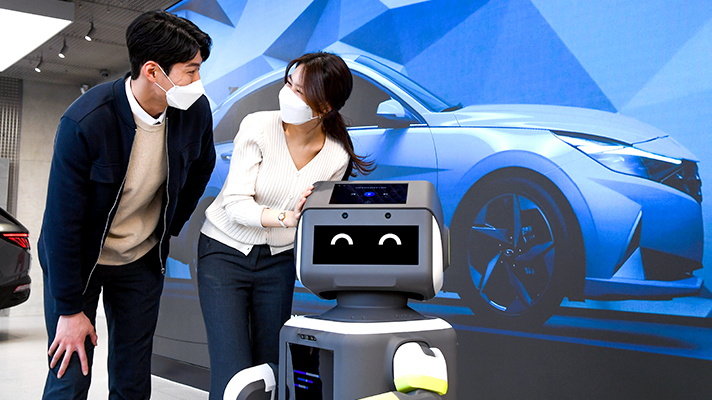
Hyundai Motor Group plans to develop more sophisticated artificial intelligence and customer service-specific services based on the data DAL-e obtained through pilot operation at the Songpa-Daero branch. In addition, DAL-e plans to provide a new and more pleasant customer experience at various service sites such as major sales retails nationwide, Hyundai Motor Studio, and Hyundai customer service centers.
DAL-e is a service robot developed exclusively by Hyundai Motor Group that maximizes customer experience in the exhibition hall by applying advanced technologies such as artificial intelligence, voice recognition, and autonomous driving. Here are the researchers of the Robotics Lab of Hyundai Motor Group who participated in the development of DAL-e and the story behind the birth of DAL-e.
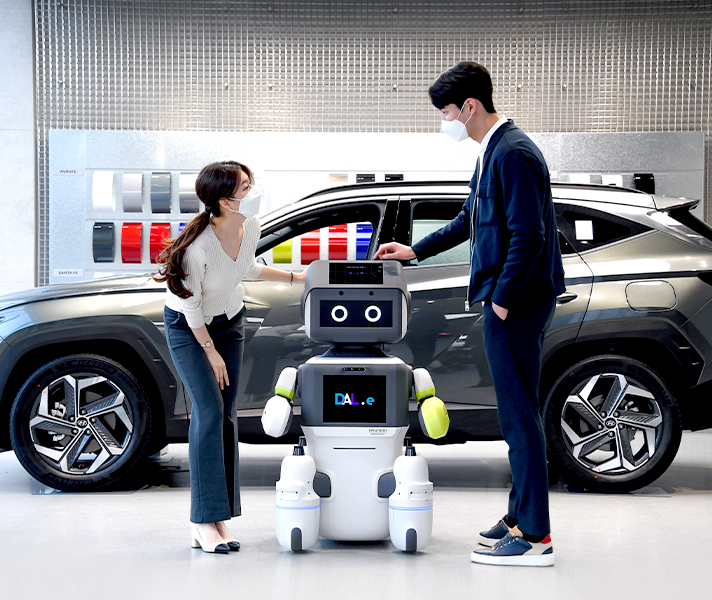
Q. What kind of research is being conducted at Robotics Lab?
Robotics Lab researches various technologies that will lead the robotics industry based on Hyundai Motor Group's philosophy of ‘Progress for Humanity’. We are developing electric vehicle-charging robots, service robots, etc., starting with wearable robots CEX, VEX, and MEX that provide physical assistance to humans, all for the sustainable development of future robots.
Q. How was DAL-e developed?
In order to develop the DAL-e, the researchers first went to car dealerships to investigate the needs of car masters and customers. As a result of the survey, customers were hoping for a non-face-to-face robot service that would allow them to casually visit the automobile exhibition hall, and car masters expected the robot to share some tasks. As a result, DAL-e is designed so that anyone can conveniently use it by applying a natural language dialogue system and autonomous driving technology. It took about two and a half years from development to completion.
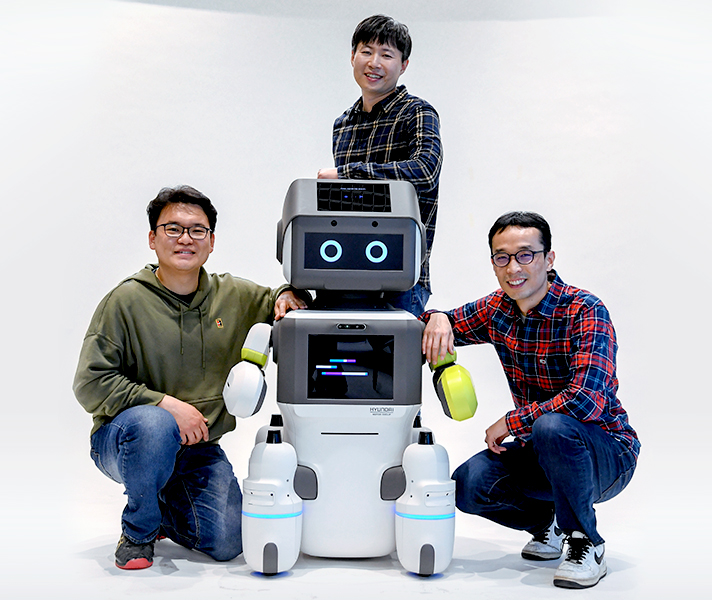
Q. What was the most difficult part of the development process?
We had to develop our own hardware modules and software and organically integrate them, and choosing the right communication system between the modules was the most difficult part. Since there are not many companies that have started developing service robots, we had to start from scratch. Also, considering that the content provided by DAL-e needs to be updated from time to time, the Graphic User Interface (GUI) and the Voice User Interface (VUI) had to be content-oriented with a flexible structure. In software design, it was difficult to design various channels such as remote controller or applications for controlling the robot.
Q. How much is DAL-e's autonomous driving technology advanced so far?
We believe that DAL-e should not only move safely around customers but also demonstrate a certain level of gestures and movement that fit the philosophy of our brand - Hyundai and Kia. Researchers have put a lot of effort into implementing DAL-e's unique motion features, and are still improving them. The technology used in autonomous vehicles was applied to the DAL-e. Self-driving cars recognize and analyze the driving environment to drive themselves, while DAL-e makes its own way to measure the space indoors with Lidars and camera sensors. For reference, the Lidar is mounted on the top of two body parts that look like legs when viewed from the front.
Q. Is DAL-e at other exhibition halls overseas as well?
The software of DAL-e is designed with a structure that is easily compatible with various languages. Based on the results of the pilot operation, we think DAL-e will be able to play an active part in overseas exhibition halls. Of course, research on customer response scenarios and gestures suitable for the country would be essential.
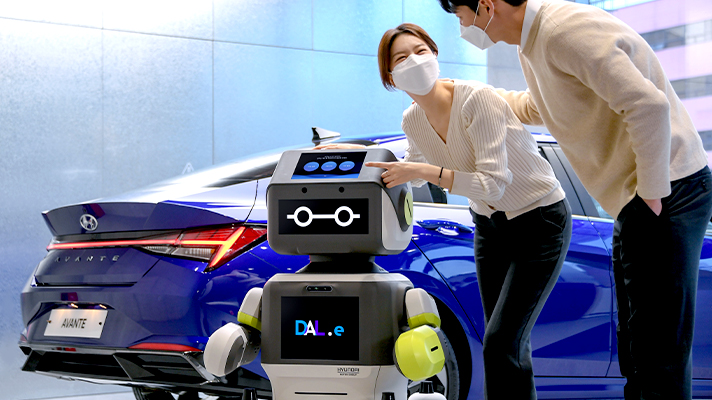
Q. From the researchers' perspective, what is the best part of DAL-e?
DAL-e is a service robot specialized in spatial recognition, image processing, and natural language use, and it creates a smoother communication environment between customers and employees. It can be compared to the role of an intern employee. It also presents new entertainment experiences to customers, such as taking pictures. In the future, we hope that some customers will visit the store just to see DAL-e.
Q. In the future, which industries can utilize service robots such as DAL-e?
The popularization of service robots is currently ongoing. It is still too early to apply it to various places and situations. Just like we did with DAL-e, it is necessary to develop customized service features for specific areas. Researchers at the Robotics Lab of Hyundai Motor Group are constantly exploring to expand the application of service robots, and we are seeking opportunities to utilize them in specific business areas such as logistics and security. If we continue to develop robot-related artificial intelligence technologies, hardware, and software platforms, we will soon be able to meet robots in various areas of our daily lives.
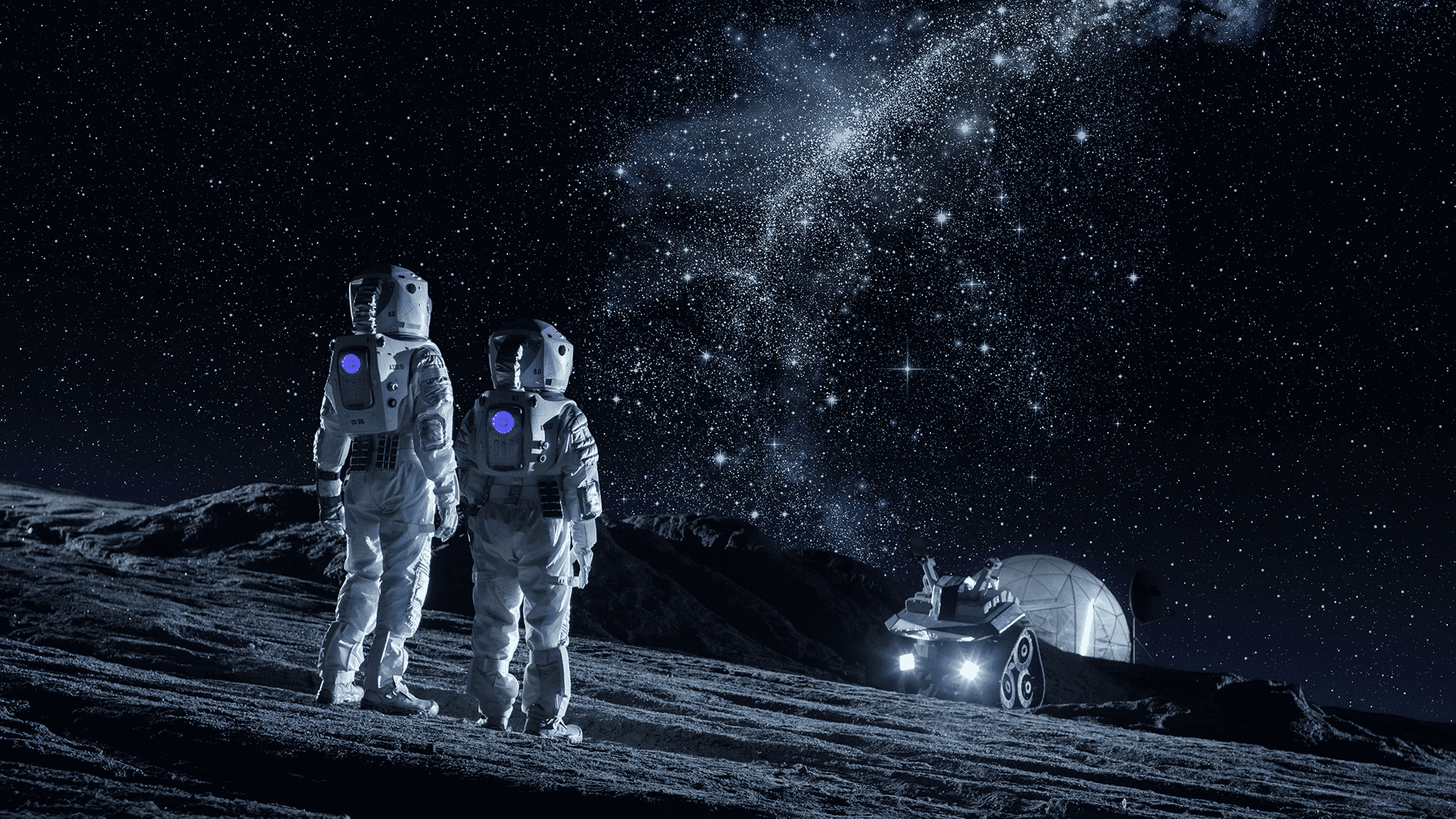
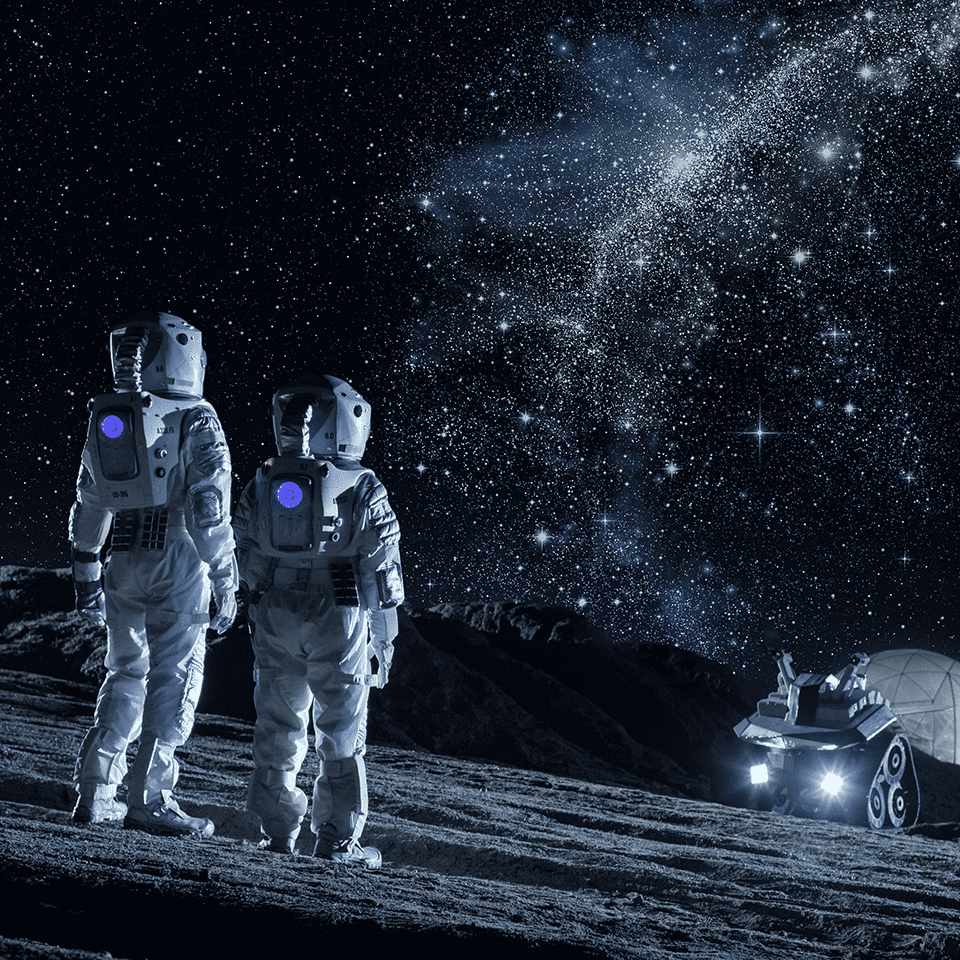
Hyundai Motor Group, To The Moon
2022.11.03 6min read